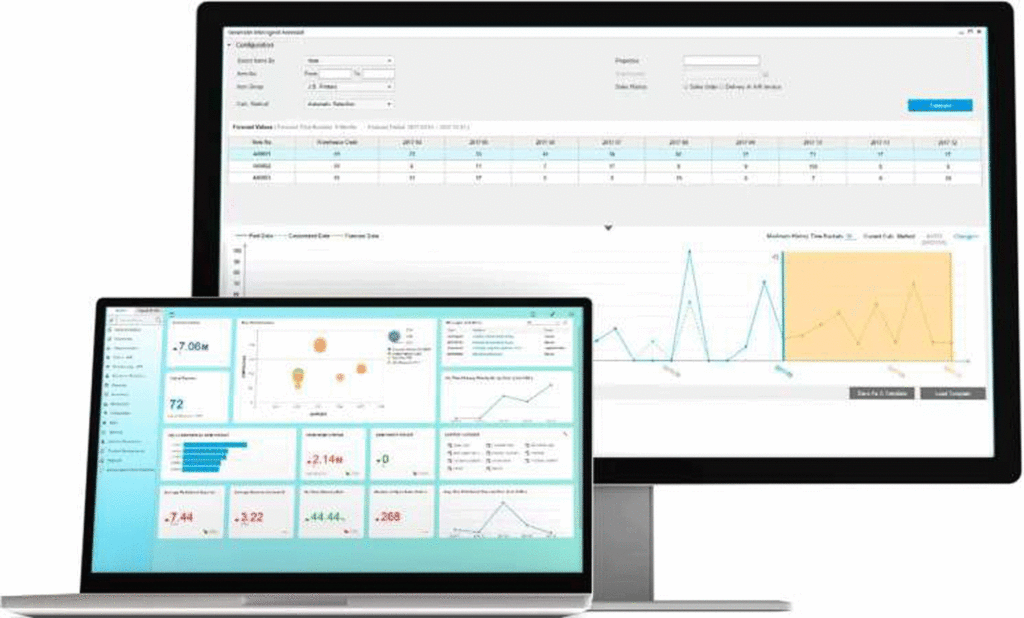
From Data to Decisions: Harnessing SAP Business One for Smarter Inventory Management
Effective inventory management is all about leveraging data. Wholesale Distribution Managers need to have key metrics like inventory numbers, costing, margins and cash flow at their fingertips so they can track orders, manage stock levels, and make faster, smarter decisions. Ultimately, streamlined inventory management operations are critical for gaining competitive advantage and ensuring customer satisfaction.
But that’s not the reality in many warehouses. Managing inventory often involves time-consuming, redundant manual tasks that open the door for errors, inaccurate information, and inefficient processes. In many cases, critical data resides in siloed systems, making it difficult to gain critical insights that could improve speed and accuracy.
At the heart of these challenges lies a need for integrated, automated data capture, storage, and reporting. With better data visibility and analytics, you can access the right data at the right time to lower costs, reduce risk, and optimize customer experiences.
Put Your Data to Work with the Right ERP

An ERP system like SAP Business One helps you put your data to work so you can improve accuracy, efficiency, and scalability. From stock management to picking, packing, and shipping workflows, you can overcome inventory management hurdles and simplify complexities that create clogs in your supply chain.
Stockouts and Overstocks
Both stockouts and overstocks cost you money. Without accurate, easily accessible data, however, it’s difficult to avoid stockouts that lead to lost sales and ovestocks that tie up valuable capital. SAP Business One integrates with Versago to provide real-time inventory visibility so you can:
- Optimize inventory volume and establish the right replenishment schedule
- Manage inventory in multiple warehouse locations
- Manage carrying costs and cash flow
- Compensate for changing customer demand
- Automate reorders to maintain optimal stock levels
Inefficient Order Processing
Manual order processing is error-prone, time-consuming, and difficult to scale, especially as sales volume increases. As inventory expands, this can cause delays and miscommunication between departments, ultimately impacting the customer experience.
SAP Business One excels at automating order processing through integration and exchange of information with EDI, eCommerce, Customer and Sales Portals, and WMS systems. This makes it possible to:
- Process orders of all types, including sales orders, purchase orders, and transfer orders
- Streamline fulfillment and ensure well-designed processes
- Track customer orders and boost efficiency for picking, packing, and shipping
- Increase order processing speed
Lack of Visibility
Distributors often use multiple custom systems for sales, inventory, and finances. This traps data in silos, creating redundancy and complicating analytics by making it difficult to share information between systems. SAP Business One solves this problem by bringing all your data together in one single-source system that improves visibility and access.
- Provide all departments with a single source of truth for all business data
- Empower better decision-making based on real-time data.
- Streamline data visibility for faster, more accurate insights
- Improve demand forecasting to align stock levels with market changes
- Create transparency around inventory turnover, order processing, and warehouse workflows
Poor Communication
Accurate communication is the foundation for collaboration among departments. When systems don’t connect with each other, communication gaps will lead to misunderstandings, inaccurate information, and inconsistent data tracking. This makes it difficult to identify trends or respond quickly to changing supply and demand.
Managers can close those communication gaps by connecting SAP Business One with extensions like Third Wave’s Versago and Bizweaver. These apps facilitate better communication to business partners, people and systems by ensuring everyone has access to the same information.
- Bizweaver – Bizweaver automates processes and streamlines inventory management by synchronizing transactions across the organization. It serves as a hub for EDI, 3PLs, shipping and logistics, CRM systems, and eCommerce platforms.
- Versago – Versago streamlines digital communication by connecting departments, channels, partners, employees, and locations with SAP Business One data. It gives you the flexibility to streamline collaboration and address specific issues with distribution, fulfillment, and more.
Limited Reporting and Analysis
Another problem with siloed data is that distributors may struggle to get the data they need to create up-to-date, accurate reports. Without this real-time data access, they will struggle to make informed decisions and respond to changes in market demand.
SAP Business One integrates with cloud-based reporting software Solver to offer robust reporting and analytics tools that support better decisions.
- Track key metrics like sales trends, profitability, and customer behavior
- Improve visibility for more accurate planning and robust reports
- Drill down into details that help you flag problems, identify opportunities, and share insights
Streamline Inventory Management with SAP Business One & Third Wave
Inventory management and order fulfillment are the lifeblood of your supply chain. When these operations don’t function well, your business pays the price in lost revenue, missed opportunities, and dissatisfied customers.
In today’s competitive landscape, wholesale distributors need a strategic plan to keep inventory workflows and operations running smoothly, meet customer demand and avoid inefficiencies. To achieve these goals, Third Wave partners with you to harness the power of SAP Business One and transform your inventory management framework. As trusted industry experts, we show you how to create synergy between data and processes so you can build an agile, resilient supply chain.

